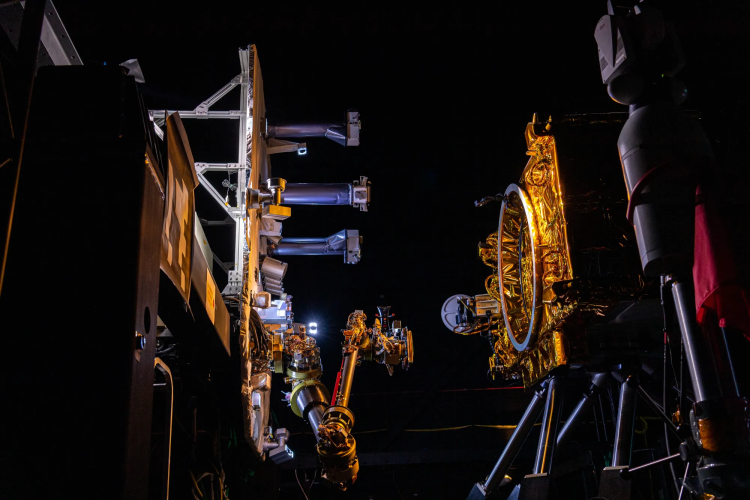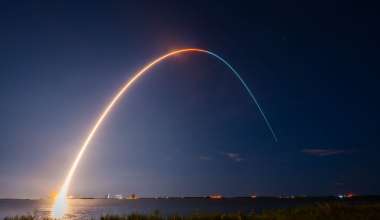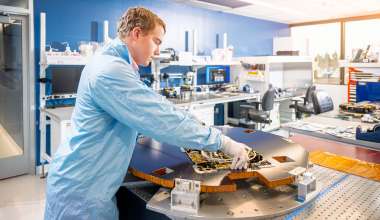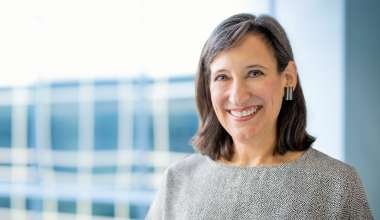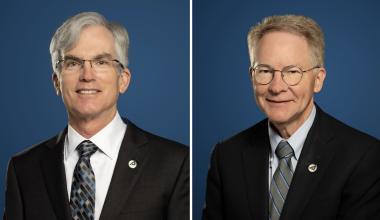A new era of integration, innovation and collaboration for human, uncrewed and robotic space activity is underway. U.S. preeminence in space may someday expand within this paradigm even to the far reaches of the solar system. This will depend on the advancement of capabilities for in-space servicing, assembly and manufacturing (ISAM) and will be manifested by emphasizing a collaborative whole-of-nation approach.
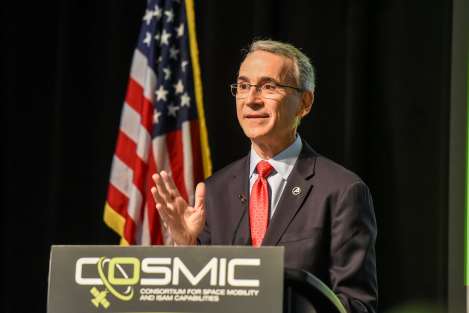
The Consortium for Space Mobility and ISAM Capabilities (COSMIC) serves as a catalyst for this vision, facilitating the convergence and coordination of diverse stakeholders across government, industry and academia to create a new foundation that will propel the space architectures of the future. Established by the NASA Space Technology Mission Directorate (STMD) and managed by The Aerospace Corporation, COSMIC is a direct response to the White House’s National ISAM Implementation Plan.
“One of the defining trends of this new space age has been the dramatic increase in stakeholders across defense, civil and international space. At Aerospace, we take our role as a connector and convener across the space enterprise very seriously, and we are increasingly focused on ensuring success from the enterprise perspective,” said Steve Isakowitz, President and CEO of Aerospace. “This means looking beyond individual systems or spacecraft and delivering end-to-end solutions that meet the needs of diverse partners and missions and supporting national priorities. ISAM is a great example of this type of approach that is needed.”
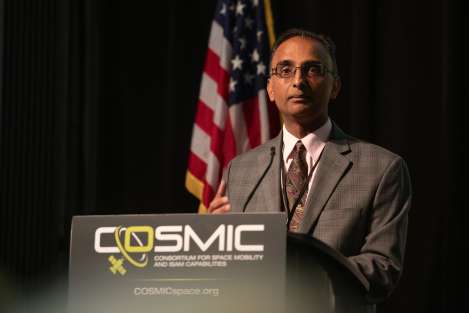
In November, COSMIC held its inaugural meeting, kicking off its endeavor to chart the course for ISAM as integral part of space activities and turning what was once considered novel achievements—as demonstrated by missions such as Orbital Express and OSAM-1—into the standard of future missions.
“COSMIC sets out to unite expertise from government, academia and industry to share knowledge, reduce development costs and accelerate the universal adoption of ISAM capabilities for current and future architectures,” said Dr. Prasun Desai, Associate Administrator (Acting) of NASA STMD. “The resulting innovations will not only extend the lifespan of spacecraft but also contribute to a sustainable future in space, which is really the next frontier.”
The two-day event hosted at the University of Maryland featured leaders from NASA, the U.S. Space Force (USSF), Air Force, U.S. Space Command and the White House Office of Science and Technology Policy (OSTP), drawing nearly 600 total participants from industry, academia and research organizations to collaborate on advancing the nation’s ISAM leadership.
Building ISAM’s Future Together
Space-based capabilities permeate nearly every aspect of the nation’s infrastructure today and play an increasingly critical role in strengthening U.S. scientific innovation, economic prosperity and national security. COSMIC’s role in fostering a collaborative ecosystem that harnesses the nation’s collective brainpower, resources and technologies can accelerate the wider adoption of ISAM and usher in a new era of advanced space operations.

“COSMIC is a nationwide alliance for ISAM. What we are trying to do is enable the U.S.-based community to provide global leadership in ISAM. That leadership can take many roles, but it is critical to preserve U.S. preeminence in space,” said Aerospace’s Greg Richardson, Executive Director for COSMIC. “Our mission statement is we want to make ISAM a routine part of space architectures and mission lifecycles, and it's that word ‘routine’ that carries so much weight in that statement.”
ISAM capabilities enable essential in-space services that could unlock entirely new dimensions of mission planning and space architectures for the future, breaking through the limitations and dependency on costly, time-intensive, single-launch systems.
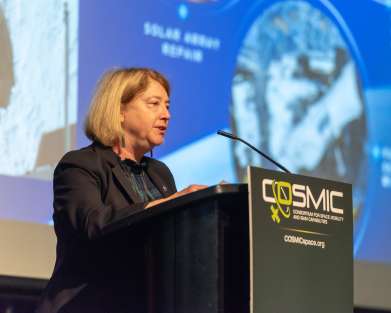
These concepts—like refueling spacecraft to extend mission lifetime, assembling structures in orbit to enhance agile architecture or manufacturing components on another planet to expand space exploration—completely change how space will be won.
“When I look at the impact that the technologies individually, but also collectively have, you look at manufacturing here on Earth. It supports everything we do. It's absolutely critical. These are foundational things that actually are transformational. I want to emphasize how much this is going to impact, not just what we're doing in Earth’s orbit today, but beyond,” said Pam Melroy, Deputy Administrator of NASA. “To build this ecosystem, collaboration is going to be key. We need to collaborate to compete. This is a community that can bring forward issues that affect all of us.”
Harnessing the Power of Collaboration
At the kickoff meeting, COSMIC facilitated discussions on a wide range of key topics, such as bolstering government and commercial partnership, exploring the economic and technical factors of ISAM, and delving deeper into how the consortium works together.
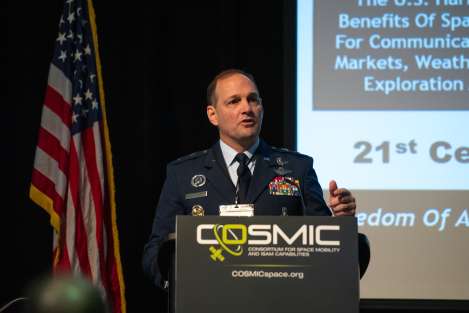
One example of this alignment is Space Systems Command’s (SSC) Space Access, Mobility and Logistics (SAML) program, which focuses on solutions for refueling USSF’s satellites in space and other on-orbit services. USSF’s shift toward Dynamic Space Operations requires sustained maneuverability of spacecraft, which is only possible if they can be refueled.
“When we look at 10-20 years down the line—which is not very far off—this is what our game plan is for Space Access, Mobility and Logistics. In the 2030 timeframe, we're also getting beyond the tyranny of the faring, driving to leverage the capabilities of in-space, manufacturing and institute materials… I think that has multiple capabilities that will benefit us all,” said Maj. Gen. John M. Olson, Mobilization Assistant to the Chief of Space Operations for USSF. “It's all about a hybrid space architecture. Partnering, leveraging and focusing on ISAM in a ‘WeSAM' type of approach.”
COSMIC also established five Focus Areas: Missions and Ecosystems, Demonstration Infrastructure, Workforce Development, Research and Technology, and Policy and Regulation. Breakout sessions enabled participants to “roll up their sleeves” and engage in detail on challenges, opportunities and actions going forward for each of these focus areas.
Collaborating with COSMIC
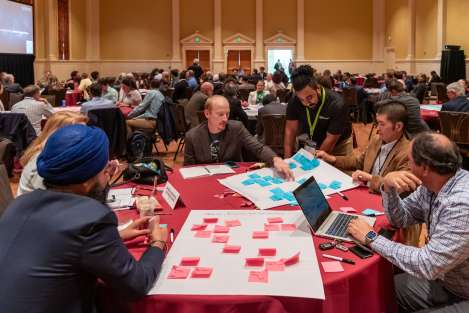
Going forward, COSMIC remains focused on supporting the development and maturation of ISAM capabilities that enable and enhance mission utility, while also promoting wider adoption of them as part of commercial and government program lifecycles. Members are encouraged to continue to share ideas, participate in peer reviews and team meetings, and contribute to products.
COSMIC’s next general membership meeting is tentatively scheduled for May 15-16, 2024 with the theme “Integrating ISAM Capabilities Through Coordination,” in Logan, Utah. The event is aligned with Space Dynamic Laboratory’s RPO Workshop.
“We hope that through collaborations like this, we can bring other folks together and we can bring COSMIC to these other problems so that we can all work these things together,” Richardson told kickoff attendees. “And that vision will continue to grow and make useful progress for the U.S. ISAM community. You're all a part of that.”
To learn more about COSMIC, visit https://cosmicspace.org/
